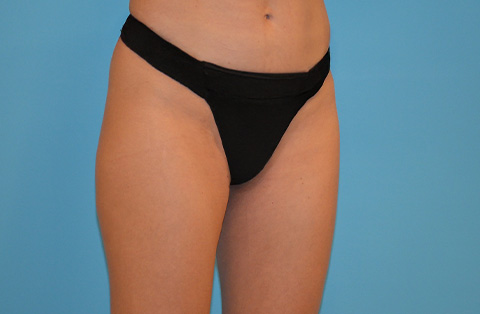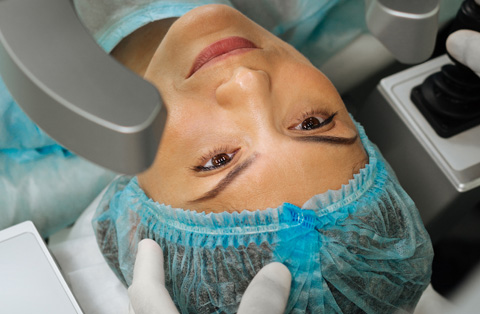Worried about scars after your thigh lift surgery? You’re not alone. Many patients seek ways to minimize these marks a year post-thighplasty.
This article will guide you through effective methods to reduce thigh lift scars. From topical treatments to advanced medical options, we’ll cover everything you need to know.
Discover practical tips and expert advice to help your scars fade and regain your confidence. Dive in to learn how you can improve the appearance of your scars and enjoy smoother, more even-toned skin.
Understanding Thigh Lift Scars
A thigh lift scar is a mark left on the skin after thigh lift surgery. The procedure involves incisions to remove excess skin and fat, resulting in scars. The location and size depend on the type of thigh lift performed. Scars can be along the inner thigh, groin, or upper thigh near the bikini line. Proper care and treatments can help minimize their appearance over time.
Types of Thigh Lift Surgery Scars
Thigh lift surgery aims to improve the appearance of the thighs by removing excess skin and fat. This procedure, however, results in scars that vary depending on the type of thigh lift performed. Understanding the different types of thigh lift surgery scars can help patients make informed decisions and manage their expectations.
Mini Thigh Lift
A mini thigh lift involves a small incision in the groin area. This procedure targets mild sagging and excess skin on the upper inner thigh. The resulting scar is relatively short and hidden within the natural creases of the groin. It is ideal for patients who need minimal correction and desire a less invasive option.
Inner (Medial) Thigh Lift
An inner thigh lift, also known as a medial thigh lift, focuses on the upper inner thigh. The incision starts in the groin and extends downward toward the knee or along the inner thigh crease. This results in a scar that is longer than that of a mini thigh lift but still relatively discreet. It effectively tightens and reshapes the inner thighs.
Outer (Bilateral) Thigh Lift
An outer thigh lift, or bilateral thigh lift, involves incisions along the outer edge of the thighs. The scars extend from the groin around the hip, possibly reaching the buttocks. This type of lift targets sagging skin on the outer thighs and can significantly improve contour. The scars are more extensive and may be visible in certain clothing.
Spiral Thigh Lift
The spiral thigh lift combines an inner and outer thigh lift. The incision starts in the groin, extends down the inner thigh, and around the outer thigh to the buttocks. This comprehensive approach addresses sagging skin all around the thigh. The resulting scars are extensive but strategically placed to be as discreet as possible.
Vertical Thigh Lift
A vertical thigh lift involves a vertical incision along the inner thigh, extending from the groin to the knee. This type of lift is suitable for patients with significant skin laxity. The resulting scar is more noticeable due to its length but provides substantial improvement in thigh contour.
Posterior Lift
A posterior thigh lift targets sagging skin on the back of the thighs. The incision is made in the crease of the buttocks, resulting in a scar that is hidden within the natural folds. This procedure effectively tightens and lifts the back of the thighs.
Thigh Lift with Liposuction
Combining a thigh lift with liposuction involves additional small incisions for fat removal. These incisions are strategically placed and typically result in small scars. The combination allows for better contouring and more dramatic results, addressing both excess skin and stubborn fat deposits.
Understanding these different types of thigh lift surgery scars helps patients choose the best procedure for their needs and prepare for the healing process.
Healing Process for Thigh Lift Scars
The healing process for thigh lift scars involves several stages. Immediately after surgery, the incision sites will be red, swollen, and possibly bruised.
The first week is crucial for proper wound care, including cleaning and dressing the incisions. Over the next few weeks, the redness and swelling will subside.
By the third to fourth week, the scars will begin to mature, changing from a reddish color to a lighter pink. It’s important to avoid sun exposure during this time to prevent darkening of the scars.
Complete healing can take up to a year, with scars gradually fading and becoming less noticeable.
How Thigh Lift Scars Look After 1 Year?
One year after a thigh lift, scars typically become less prominent. Initially, they may appear red and raised, but over time, they flatten and fade to a lighter color.
The final appearance of the scars depends on several factors, including skin type, genetics, and adherence to post-surgical care instructions.
Proper scar management techniques, such as using silicone sheets, scar gels, and regular massage, can significantly improve their appearance. Some patients might still see visible scars, but they will generally be less noticeable and blend more with the surrounding skin.
Regular follow-up with your surgeon can ensure optimal scar healing and address any concerns.
Thigh Lift Scars Before and After

Thigh lift scars initially appear red and swollen but gradually fade over time. Before surgery, sagging skin and excess fat are visible. After surgery, the thighs are smoother and more contoured, with scars becoming less noticeable as they heal. Proper care can further minimize scar appearance. See our thigh lift before and after photo gallery below.
Treatment Options to Reduce Scars After a Thigh Lift
Reducing scars after a thigh lift is essential for achieving the best cosmetic results. Various treatments can help minimize the appearance of scars and promote smoother, less noticeable skin. Here are some effective options to consider.
Scar Creams and Silicone Sheets
Scar creams and silicone sheets are popular non-invasive treatments. Scar creams contain ingredients like vitamin E, corticosteroids, or onion extract, which can help reduce redness and improve texture. Apply these creams regularly as directed by your surgeon.
Silicone sheets create a protective barrier over the scar, helping to hydrate the skin and flatten the scar tissue. They are easy to use and can be worn under clothing. Consistent use of silicone sheets can significantly improve scar appearance over time.
Scar Revision Surgery
Scar revision surgery is an option for more prominent or troublesome scars. This procedure involves removing the old scar and carefully closing the wound again to create a thinner, less noticeable scar.
It is usually performed under local anesthesia. Scar revision can be particularly effective for scars that have healed poorly or become hypertrophic (raised) or keloid (thick and irregular).
Consult with your surgeon to determine if scar revision surgery is appropriate for your situation. This option can provide more dramatic improvement in scar appearance.
Massage Techniques for Scar Reduction
Massaging the scar tissue can help break down scar tissue and improve blood circulation, promoting healing and reducing stiffness. Start massaging the scar once it has fully healed and the incisions have closed, usually several weeks after surgery. Use gentle pressure and circular motions with your fingers.
You can also apply scar cream or oil during the massage to enhance its effects. Regular massage, performed several times a day, can soften the scar tissue and make it less noticeable. It is important to follow your surgeon’s guidelines to avoid any complications.
Reducing thigh lift scars involves a combination of treatments and consistent care. Using scar creams and silicone sheets, considering scar revision surgery for more severe cases, and incorporating massage techniques can all contribute to smoother, less visible scars.
Post-Operative Care for Thigh Lift Scars
Proper post-operative care is crucial for minimizing thigh lift scars and ensuring the best healing results. Following a structured care routine can significantly improve the appearance of your scars. Here are essential tips for effective post-operative care.
Sun Protection and Sunscreen Use
Protecting your scars from the sun is vital. UV rays can darken scars and make them more noticeable. Avoid direct sun exposure to the scarred area for at least a year after surgery.
When you need to go outside, wear clothing that covers the scars or use a broad-spectrum sunscreen with at least SPF 30. Apply sunscreen generously and reapply every two hours if you're outdoors for an extended period. Sunscreen protects the delicate healing skin and helps prevent hyperpigmentation.
Follow the Surgeon's Instructions Carefully
Adhering to your surgeon's post-operative care instructions is essential for optimal healing. Follow the guidelines on how to clean and dress the incision sites.
Use any prescribed ointments or medications to prevent infection and promote healing. Attend all follow-up appointments to monitor your progress and address any concerns.
Avoid activities that strain the surgical area, such as heavy lifting or intense exercise, until your surgeon gives you the green light. Proper care and attention during the recovery period can significantly reduce the visibility of scars.
Habits to Support Scar Healing
Adopting healthy habits can support scar healing. Stay hydrated by drinking plenty of water, which helps maintain skin elasticity and overall health. Eat a balanced diet rich in vitamins and minerals, especially those that promote skin health, like vitamins C and E, and zinc.
Avoid smoking and limit alcohol consumption, as these can impair healing and negatively affect your skin. Gentle massaging of the scar tissue, once the incisions are fully healed, can also promote healing and improve scar texture. Use recommended scar creams or oils during the massage to enhance its effects.
Proper post-operative care for thigh lift scars involves sun protection, diligently following your surgeon’s instructions, and maintaining healthy habits. These steps help ensure that your scars heal well and become less noticeable over time. By taking these measures, you can achieve smoother, more aesthetically pleasing results.






